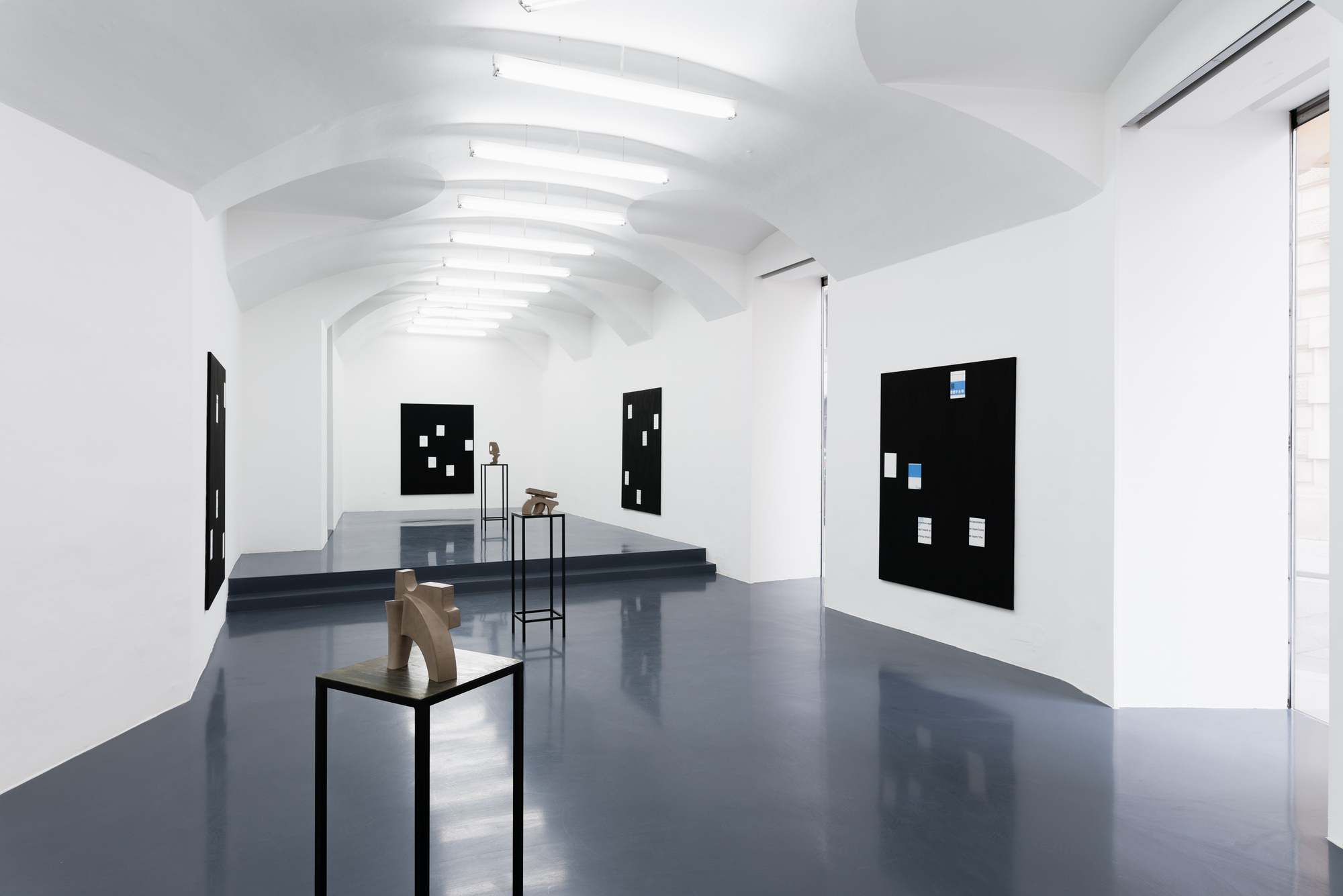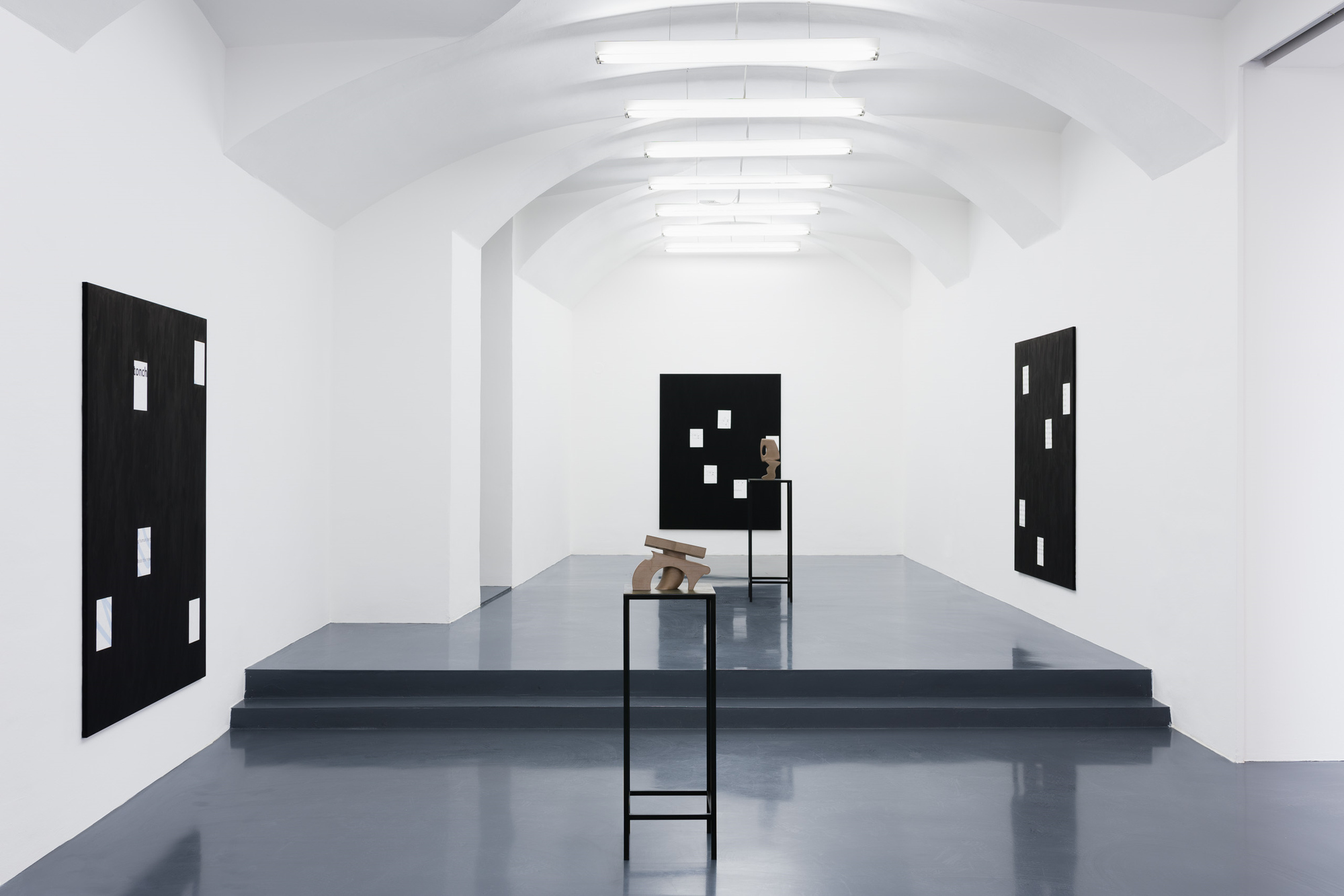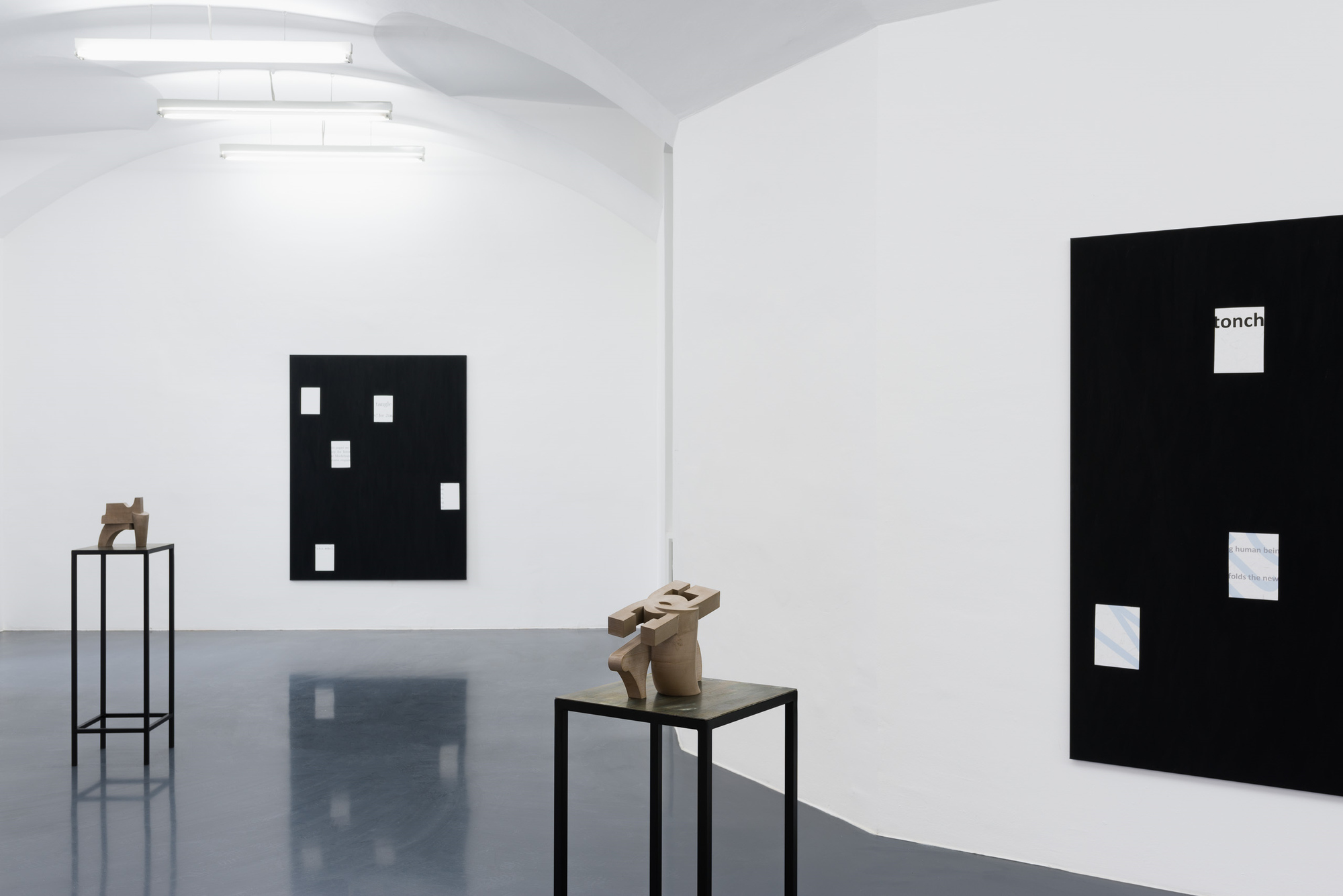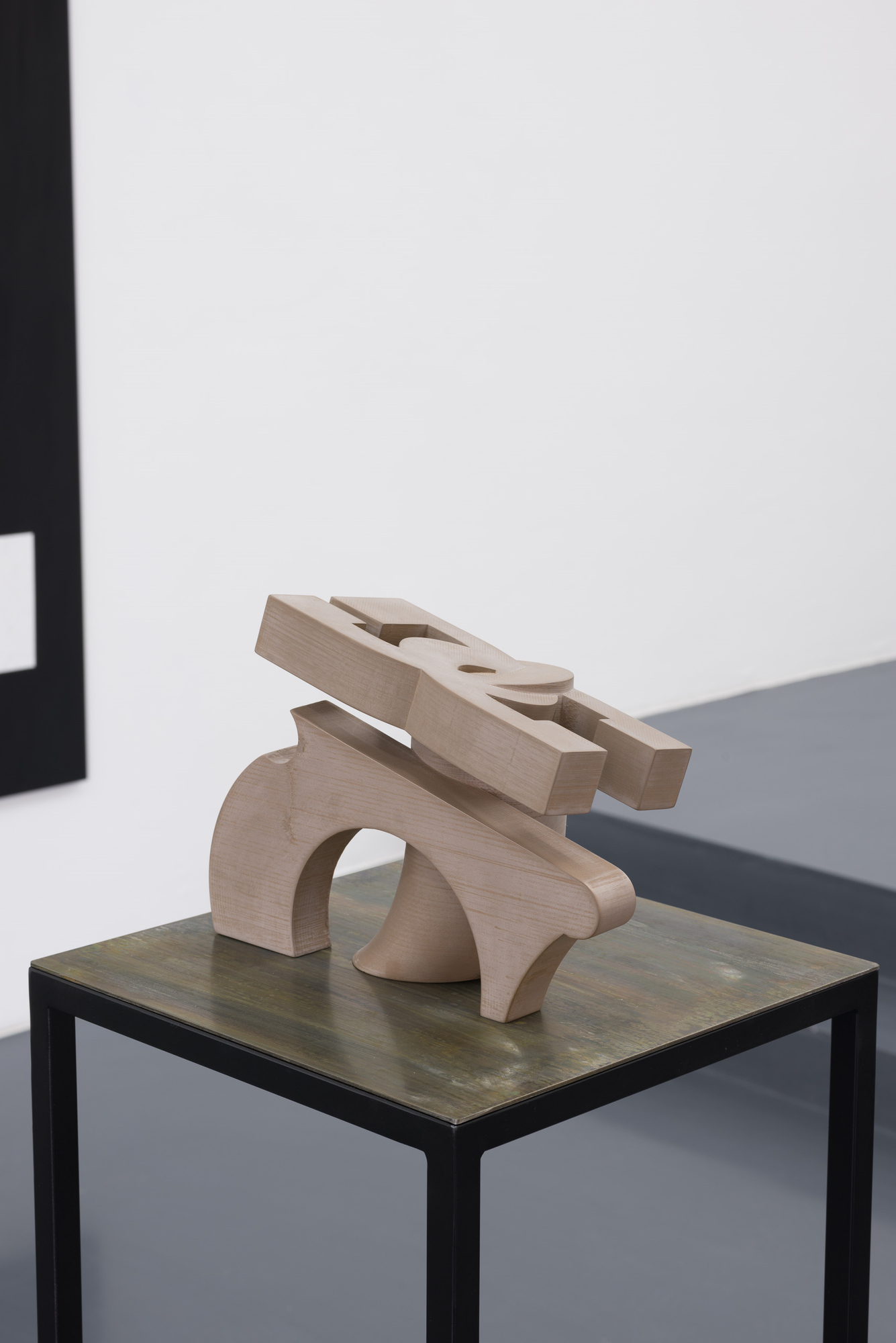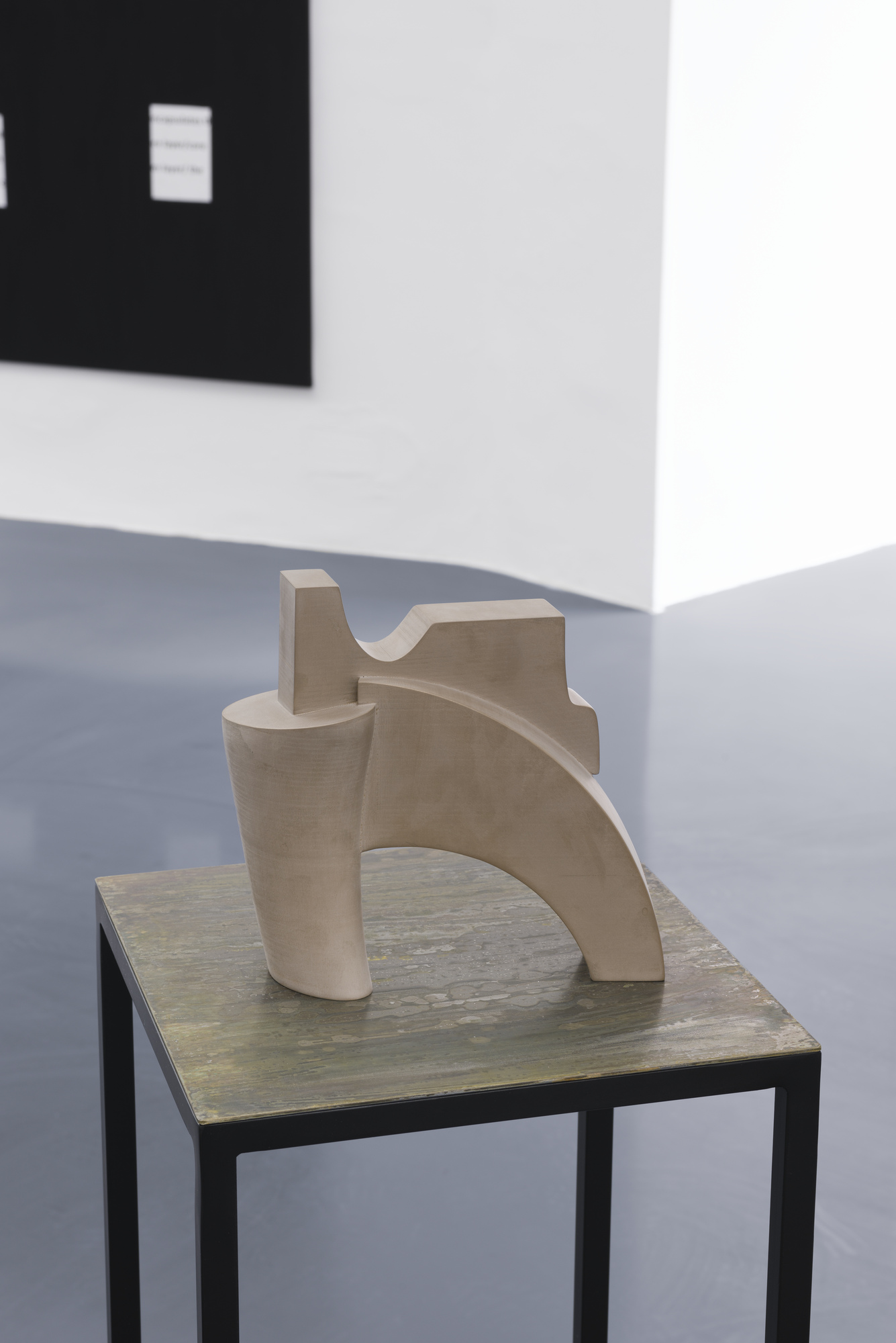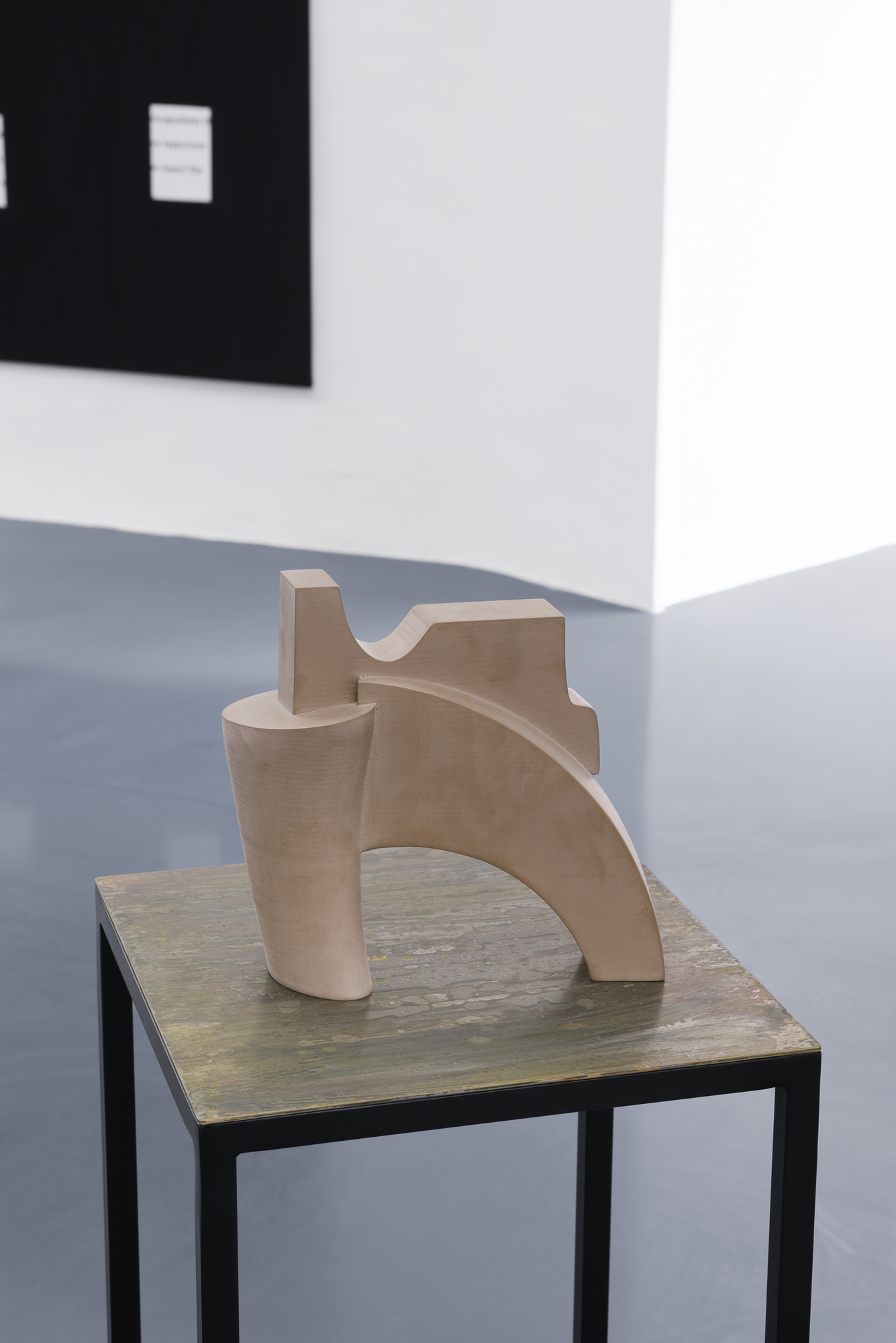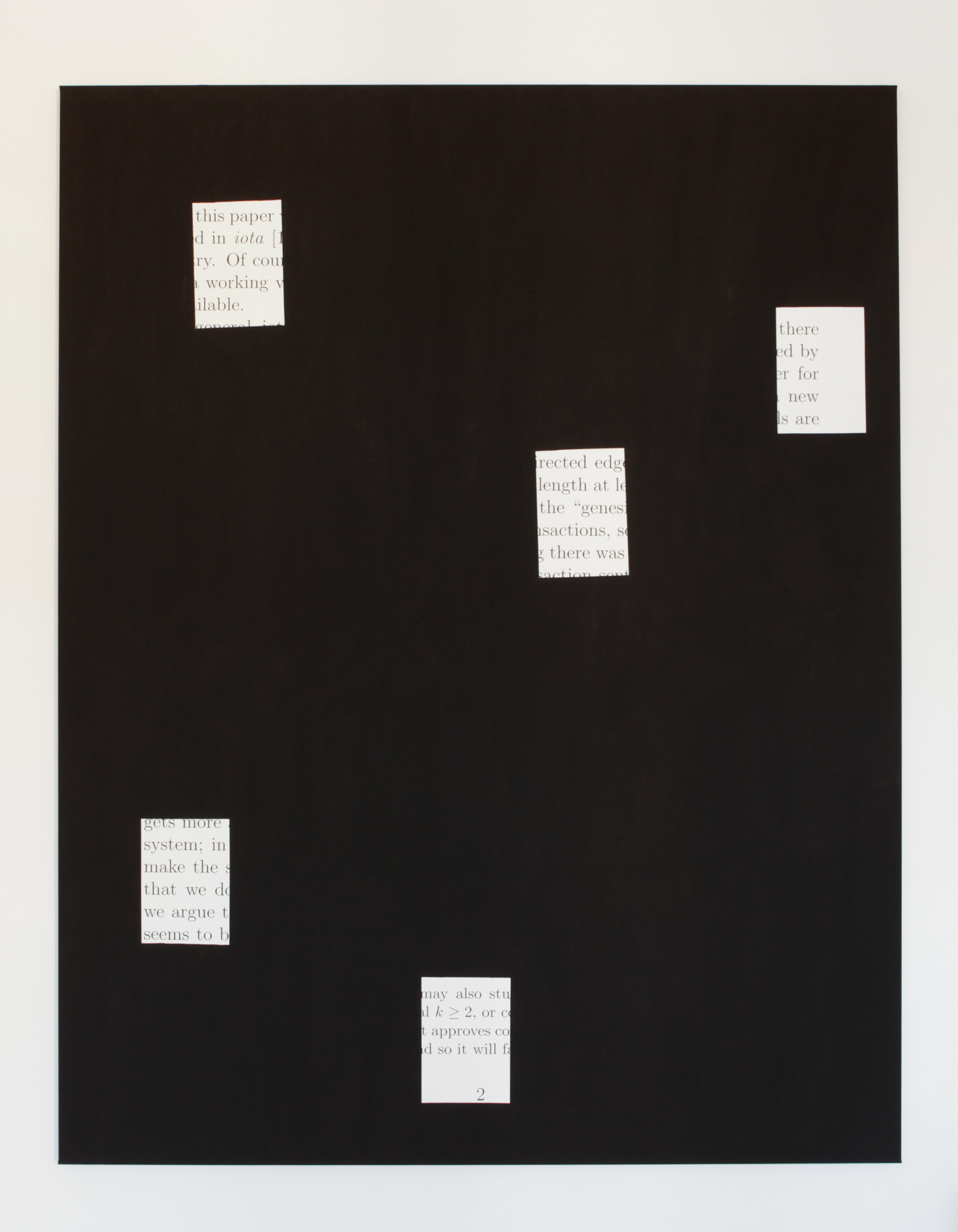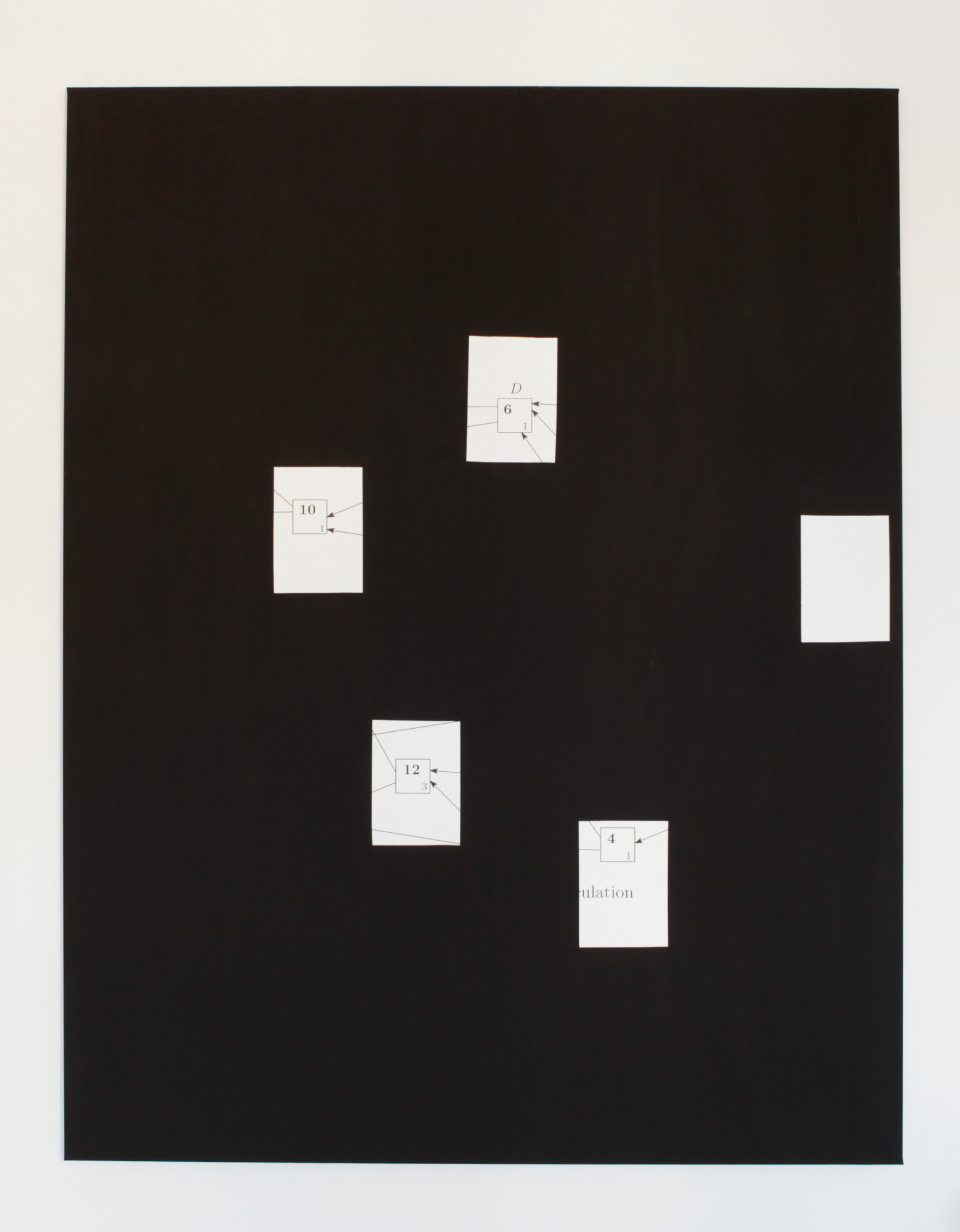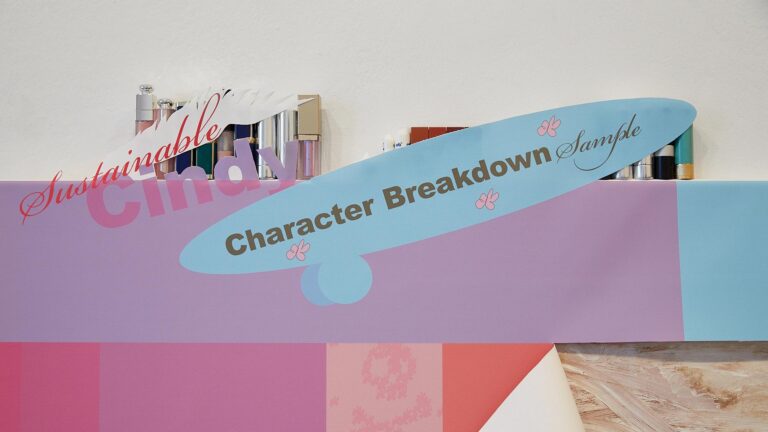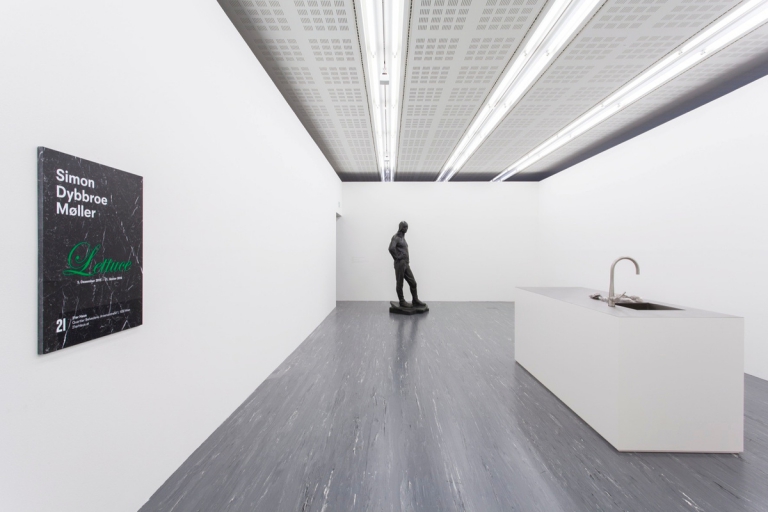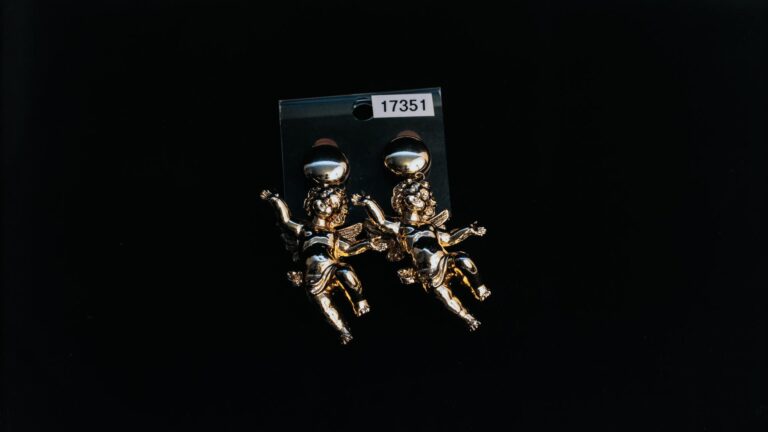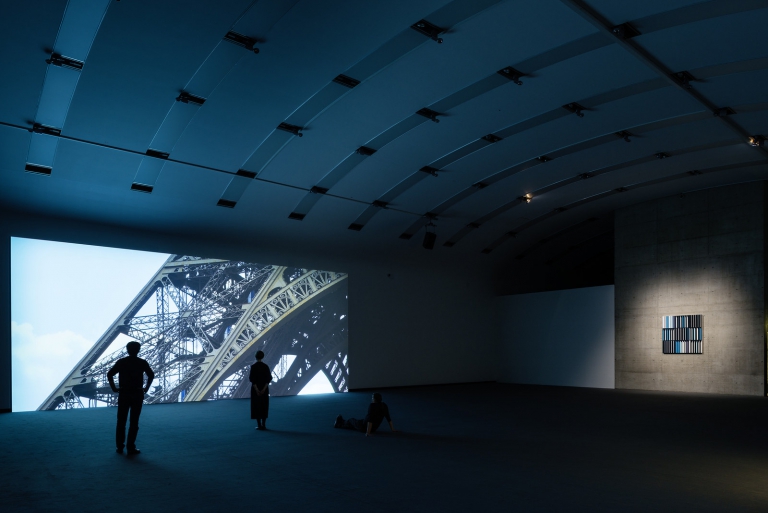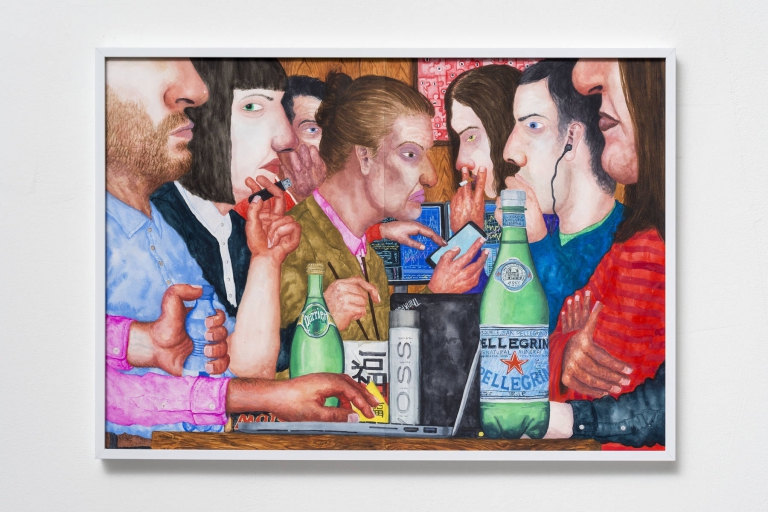Artist: Andy Boot
Exhibition title: Smart Sculptures
Venue: Galerie Emanuel Layr, Vienna, Austria
Date: November 10 – December 22, 2017
Photography: all images copyright and courtesy of the artist and Galerie Emanuel Layr, Vienna
For his second solo show at Galerie Emanuel Layr, Andy Boot presents a new body of work titled Smart Sculptures. A group of small-scale bronze objects in the style of modern artist Barbara Hepworth, Smart Sculpture (one) to (three), is theatrically presented on stained metal bars. Whereas Hepworth carved her works in stone, each of Boot’s bronzes is 3-D printed and composed from various files that, following the process of addition, coalesce into unity. Depending on the angle from which his works are viewed, they take on a different character to underscore their physical appearance. Anchoring the sculptures and hung onto the walls are White Papers, a new series of paintings in which theoretical texts underpinning two blockchain interoperability projects (IOTA and Waltonchain (WTC)) are overpainted with Black 2.0, a highly pigmented, ultra-matte, black acrylic paint that is newly available and supposed to be the blackest black that exists.
The White Papers series is inspired by the decentralized organization of blockchains—an ever-expanding distributed, ad immutable ledger of sorts. In each painting, notes on one of the aforementioned start-ups are embedded in five blocks, framed and surrounded by black paint in thick brushy strokes. Each element captures only bits and pieces of information, e.g., a sign, a number, a syllable, and some a few words; however, the entire description is never fully visible. Similarly, a blockchain is organized around information that is stored in a distributed database and can only be verified by the entire system. The two start-ups in this case, IOTA and WTC, emerged out of recent blockchain developments and publicity. IOTA invented Tangle, a blockless ledger that enables the transfer of values without fees while ensuring the privacy of data. WTC on the other hand is an innovation based on a technology called radio-frequency identification (RFID) that helps to manage supply chains in an Internet of Things structure.
The term Internet of Things (IoT) was coined by Kevin Ashton, a technology pioneer, in 1999. “If we had computers that knew everything there was to know about things—using data they gathered without any help from us—we would be able to track and count everything, and greatly reduce waste, loss, and cost,”2 he stated. Ashton envisioned a world where things act as ‘smart’ beings with the aim to make our lives as human beings less stressful, easier, and joyful. What might have seemed visionary in 1999 is real today, as forecasted by the research firm Gartner, that says “8.4 billion connected ‘things’ will be in use”2 by the end of this year.
But why “smart” objects? What are “dumb” things? Do our concepts of quality and value clash? Laced with humor, Boot’s sculptures look at the term “smart,” highlighting the mutability of our values and our willingness to give “things” a life of their own. The works are composed digitally by using open-source files of all kinds of products (e.g., cars, tools, and household items) from which Boot chooses planes and fragments to create new constellations. The collected data is handed over to a 3-D printer, where it is processed and printed with a bronze filament, a composite which consists of 20% PLA, a thermoplastic material, and 80% bronze powder to guarantee the weight and look of metal. Even though the material puts emphasis on the aesthetics of early modern sculpture, these works are shaped by an approach that challenges technological innovations and current market trends.
The show weighs humor with larger questions about the shift toward decentralization and looks at the rise of blockchain technology and the tokenization of everything. Do these changes go hand in hand with a new set values? Are we experienced enough to navigate a community of objects and beings?
Text by Vivien Trommer
Footnotes
1 Kevin Ashton, “That ‘Internet of Things’ Thing,” RFID Journal, June 22, 2009.
2 Press release, Gartner Says 8.4 Billion Connected ‘Things’ Will Be in Use in 2017, Up 31 Percent From 2016, February 7, 2017.
Andy Boot, Smart Sculptures, 2017, Installation view, Galerie Emanuel Layr, Vienna
Andy Boot, Smart Sculptures, 2017, Installation view, Galerie Emanuel Layr, Vienna
Andy Boot, Smart Sculptures, 2017, Installation view, Galerie Emanuel Layr, Vienna
Andy Boot, Smart Sculptures, 2017, Installation view, Galerie Emanuel Layr, Vienna
Andy Boot, Smart Sculptures, 2017, Installation view, Galerie Emanuel Layr, Vienna
Andy Boot, Smart Sculptures, 2017, Installation view, Galerie Emanuel Layr, Vienna
Andy Boot, Smart Sculptures, 2017, Installation view, Galerie Emanuel Layr, Vienna
Andy Boot, Smart Sculptures, 2017, Installation view, Galerie Emanuel Layr, Vienna
Andy Boot, Smart Sculptures, 2017, Installation view, Galerie Emanuel Layr, Vienna
Andy Boot, Smart Sculpture (one), 2017, 3D printed plastic and bronze composite, 34.6 x 7.7 x 17.3 cm
Andy Boot, Smart Sculpture (one), 2017, 3D printed plastic and bronze composite, 34.6 x 7.7 x 17.3 cm
Andy Boot, Smart Sculpture (two), 2017, 3D printed bronze and plastic composite, 21,7 x 13,9 x 31,3 cm
Andy Boot, Smart Sculpture (two), 2017, 3D printed bronze and plastic composite, 21,7 x 13,9 x 31,3 cm
Andy Boot, Smart Sculpture (two), 2017, 3D printed bronze and plastic composite, 21,7 x 13,9 x 31,3 cm
Andy Boot, Smart Sculpture (three), 2017, 3D printed bronze and plastic composite , 23,6 x 25,5 x 12,7 cm
Andy Boot, Smart Sculpture (three), 2017, 3D printed bronze and plastic composite , 23,6 x 25,5 x 12,7 cm
Andy Boot, Smart Sculpture (three), 2017, 3D printed bronze and plastic composite , 23,6 x 25,5 x 12,7 cm
Andy Boot, Smart Sculpture (three), 2017, 3D printed bronze and plastic composite , 23,6 x 25,5 x 12,7 cm
Andy Boot, white paper (IOTA) 1, 2017, acrylic and print on canvas, 180 x 140 cm
Andy Boot, white paper (IOTA) 2, 2017, acrylic and print on canvas, 180 x 140 cm
Andy Boot, white paper (IOTA) 3, 2017, acrylic and print on canvas, 180 x 140 cm
Andy Boot, white paper (WTC) 1, 2017, acrylic and print on canvas, 180 x 140 cm
Andy Boot, white paper (WTC) 2, 2017, acrylic and print on canvas, 180 x 140 cm
Andy Boot, white paper (WTC) 3, 2017, acrylic and print on canvas, 180 x 140 cm



